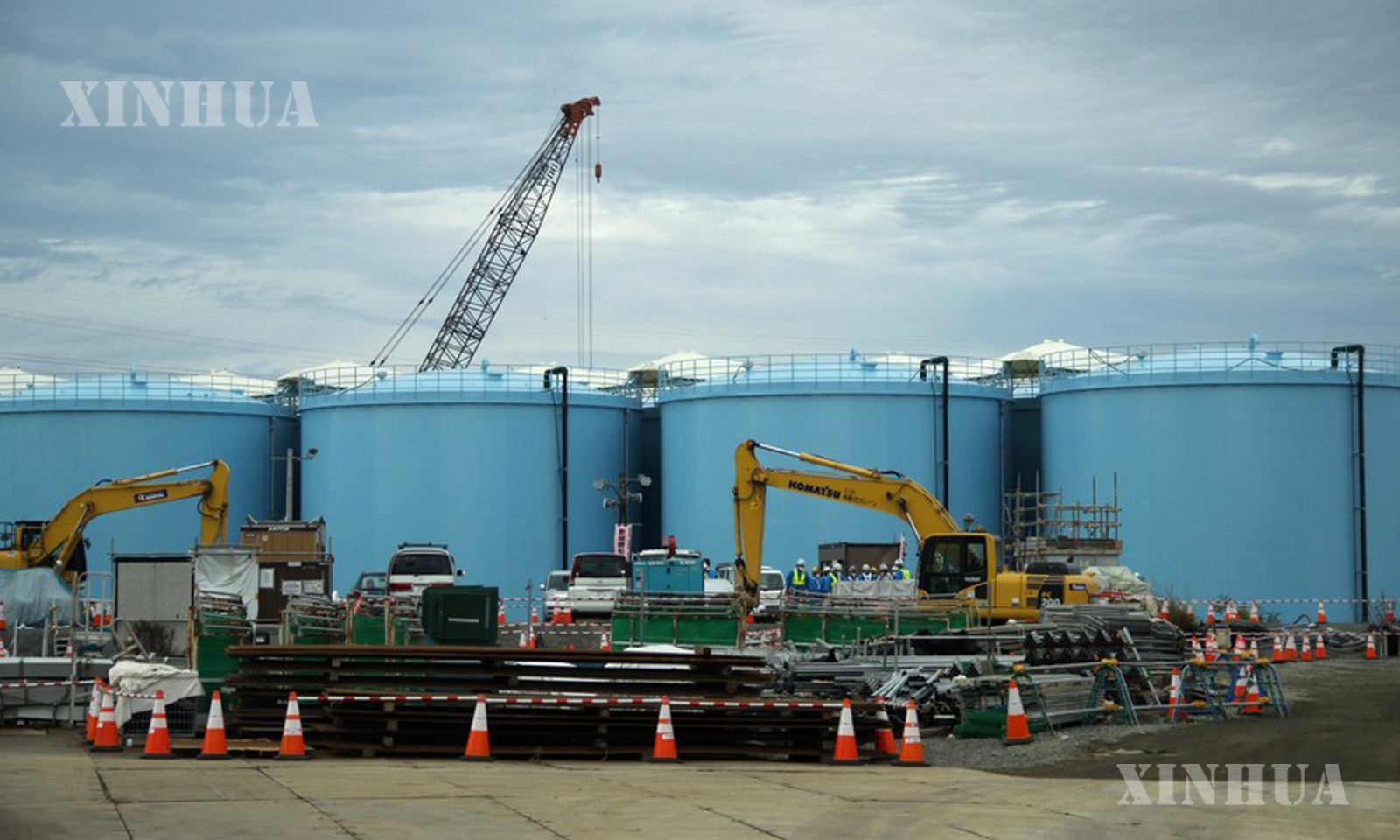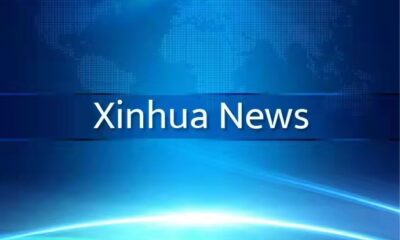Asia
ဖူကူရှီးမားဓာတ်အားပေးစက်ရုံမှ ရေဒီယိုသတ္တိကြွစွန့်ပစ်ရေများ စွန့်ထုတ်ခြင်းအစီအစဉ်ကို ဂျပန် နျူကလီးယားကြီးကြပ်ရေးက ခွင့်ပြု

တိုကျို၊ မေ ၁၉ ရက် (ဆင်ဟွာ)
ဂျပန်နိုင်ငံ၏ နျူကလီးယား ကြီးကြပ်မှုအဖွဲ့က သဘာဝဘေးဒဏ်ခံစားခဲ့ရသော ဖူကူရှီးမား ဒိုင်အိချိ (Fukushima Daiichi) နျူကလီးယားဓာတ်အားပေးစက်ရုံ မှ ရေဒီယိုသတ္တိကြွစွန့်ပစ်ရေများကို ပင်လယ်အတွင်းသို့ စွန့်ထုတ်ရေး အစီအစဉ်အား မေ ၁၈ ရက်က ခွင့်ပြုလိုက်ကြောင်း သိရသည်။

ဂျပန်နိုင်ငံ ဖူကူရှီးမားစီရင်စုရှိ ဖူကူရှီးမား ဒိုင်အိချိ နျူကလီးယားဓာတ်အားပေးစက်ရုံရှိ ရေဒီယိုသတ္တိကြွစွန့်ပစ်ရေများ သိုလှောင်ထားသော တိုင်ကီများအား ၂၀၁၇ ခုနှစ် အောက်တိုဘာ ၁၂ ရက်က တွေ့ရစဉ် (ဆင်ဟွာ)
ဂျပန်နိုင်ငံ နျူကလီးယားကြီးကြပ်မှုအာဏာပိုင်အဖွဲ့ (NRA) က ယင်းကိစ္စရပ်အပေါ် အများပြည်သူထံမှ ထင်မြင်ချက်များ ကြားနာပြီးနောက် အဆိုပါ အစီအစဉ်အား တရားဝင်ခွင့်ပြုတော့မည်ဟု ပြောကြားခဲ့သည်။
စွန့်ပစ်ရေစွန့်ထုတ်ရေးအဆောက်အအုံ တည်ဆောက်မှု စတင်ရန်အတွက် Tokyo Electric Power Company Holdings Inc. (TEPCO) သည် မြူနီစီပယ်အဖွဲ့များထံမှ ခွင့်ပြုချက်ရရှိရန် လိုအပ်မည်ဖြစ်သည်။
၁၉၈၈ ခုနှစ်က ချာနိုဘိုင်း နျူကလီးယားစက်ရုံပြီးနောက် မကြုံတွေ့ဖူးခဲ့သော နျူကလီးယား အကျပ်အတည်းသည် ၂၀၁၁ ခုနှစ်၌ ပြင်းထန်သောငလျင်နှင့် နောက်ဆက်တွဲ ဆူနာမီဖြစ်စဉ်ကြောင့် ဖူကူရှီးမား ဒိုင်အိချိ ဓာတ်အားပေးစက်ရုံ၏ အဓိက အအေးပေးစနစ်များ ထိခိုက်ခြင်းဖြင့် ဖြစ်ပေါ်လာခဲ့သည်။
ထိုအချိန်မှစ၍ ဓာတ်ပေါင်းဖို လောင်စာအအေးပေးရန် ရေပေးပို့မှုစနစ်မှာ ရှုပ်ထွေးလျက်ရှိပြီး ယင်းနေရာတွင် မိုးရေနှင့် မြေအောက်ရေများ ရောနှောပါဝင်လျက်ရှိသည်။
အဆိုပါ ညစ်ညမ်းရေများတွင် ရေဒီယိုသတ္တိကြွပစ္စည်းများ ပါဝင်ပြီး ပြဿနာများပတ်လည်ဝိုင်းနေသော ယင်းစက်ရုံသည် စက်ရုံ၏ ရေဆံ့နိုင်သောပမာဏသို့ မကြာမီ ပြန်လည်ရောက်ရှိလာမည်ဖြစ်သည်။
အစိုးရက အဆိုပါ စက်ရုံမှ ၁ ကီလိုမီတာခန့်အကွာ ပစိဖိတ်သမုဒ္ဒရာအတွင်း ပင်လယ်ကြမ်းပြင်အောက် တူးမြောင်းမှတစ်ဆင့် ရေဒီယိုသတ္တိကြွရေများ စွန့်ထုတ်ရန် စီစဉ်ထားခြင်းဖြစ်သည်။
အငြင်းပွားဖွယ် အစီအစဉ်အား ၂၀၂၃ ခုနှစ် နွေဦးရာသီတွင် စတင်ရန် အဆိုပြုထားခြင်းဖြစ်ပြီး ဒေသခံ ငါးဖမ်းသမားများနှင့် နိုင်ငံတကာအသိုင်းအဝိုင်း၏ ကန့်ကွက်မှုများစွာ ဖြစ်ပေါ်လျက်ရှိသည်။
ထိခိုက်မှုများခံစားခဲ့ပြီးဖြစ်သော ဂျပန်နိုင်ငံ ငါးဖမ်းလုပ်ငန်းအား ထပ်မံထိခိုက်စေနိုင်မည်ဖြစ်သဖြင့် ၎င်းအစီအစဉ်ကို တက်တက်ကြွကြွ ဆန့်ကျင်ကန့်ကွက်နေကြခြင်းဖြစ်သည်။
ထို့ပြင် ဂျပန်နိုင်ငံ၏ အနီးဆုံး အိမ်နီးချင်းများကလည်း ၎င်းအစီအစဉ်အပေါ် အခိုင်အမာစိုးရိမ်ကြောင်း ပြောကြားခဲ့သည်။
ဂျပန်နိုင်ငံသည် သမုဒ္ဒရာအတွင်းသို့ ရေဒီယိုသတ္တိကြွရေများ စွန့်ထုတ်ရန် တစ်ဖက်သတ်အဆိုပြုချက်အပြင် အခြားဖြစ်နိုင်ခြေရှိသော အစီအစဉ်များစွာကိုလည်း ထည့်သွင်းစဉ်းစားလျက်ရှိသည်။
ထိုရွေးချယ်စရာ အစီအစဉ်များတွင် မြေအောက်အနက်အတွင်းသို့ အဆိပ်ရှိသောရေများ ထည့်သွင်းစွန့်ပစ်ရေး၊ အငွေ့ပြန်ပြီးနောက်လေထုအတွင်းသို့ ထုတ်လွှတ်ရေး သို့မဟုတ် အစိုင်အခဲပုံစံပြုလုပ်ကာ မြေအောက်အတွင်းသို့ မြှုပ်နှံပစ်ရေး စသည်တို့ ပါဝင်ကြောင်း သိရသည်။
TEPCO အနေဖြင့် စီစဉ်ထားသည့်အတိုင်း ရေစွန့်ပစ်ရေးအဆောက်အအုံတွင် မတော်တဆဖြစ်ရပ်များ မရှိစေရေးအတွက် အစွမ်းကုန် ဆောင်ရွက်ရန် NRA ဥက္ကဋ္ဌ Toyoshi Fuketa က ပြောကြားခဲ့သည်။ (Xinhua)
…………………………………………
(English Version)
Japan’s nuclear regulator approves plan to discharge radioactive wastewater from Fukushima plant into ocean
Source: Xinhua
Editor: huaxia
2022-05-19 10:06:13
TOKYO, May 19 (Xinhua) — Japan’s nuclear regulator on Wednesday approved a plan to discharge radioactive wastewater from the disaster-hit Fukushima Daiichi nuclear power plant into the Pacific Ocean.
Japan’s Nuclear Regulation Authority (NRA) said that once opinions on the matter from the public are heard, the plan will be officially approved.
For the construction of the discharge facilities to begin, Tokyo Electric Power Company Holdings Inc. (TEPCO), the stricken plant’s operator, will need to gain consent from the municipalities.
In 2011, a nuclear crisis not seen since Chernobyl in 1988 was triggered by a massive earthquake and subsequent tsunami knocking out the Fukushima Daiichi plant’s key cooling functions.
Since then, water pumped in to cool melted reactor fuel has been accumulating at the complex and mixing with rainwater and groundwater at the site.
The tainted water contains radioactive tritium, and the beleaguered site will soon reach its capacity of the water.
The government’s plan is to release the radioactive water through a tunnel under the seabed into the Pacific Ocean roughly 1 km away from the stricken plant.
The controversial plan is proposed to begin in the spring of 2023, much to the consternation of local fisheries and the international community.
Japan’s fisheries industry has voiced its ardent opposition to the plan, as it will almost certainly cause further damage to the industry’s already battered reputation.
Moreover, some of Japan’s closest neighbors have voiced strong concerns over the plan.
Japan has been considering a number of feasible alternative plans other than its unilateral proposal just to dump radioactive water into the ocean.
These options included injecting the toxic water deep into the ground, releasing it into the atmosphere after vaporizing it, or making it into a solid state and burying it underground.
On Wednesday, NRA Chairman Toyoshi Fuketa asked TEPCO to do its utmost to ensure there are no incidents at the planned water discharge facilities, according to local reports.■
Photo 1 : File photo taken on Nov. 12, 2011, shows the exterior of Fukushima Daiichi nuclear plant in Fukushima Prefecture, Japan. (Xinhua)
Photo 2 : File photo taken on Oct. 12, 2017, shows huge tanks that store contaminated radioactive wastewater in Fukushima Daiichi nuclear plant, in Fukushima Prefecture, Japan. (Xinhua)






